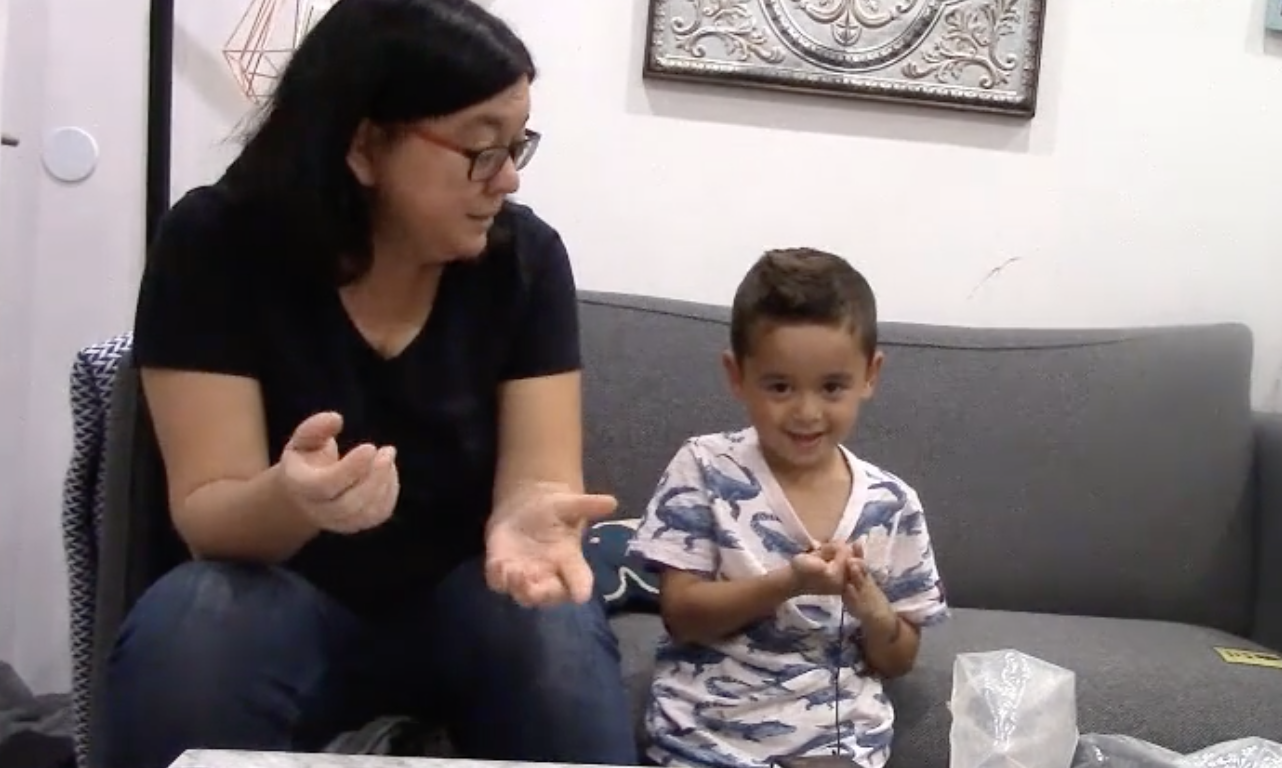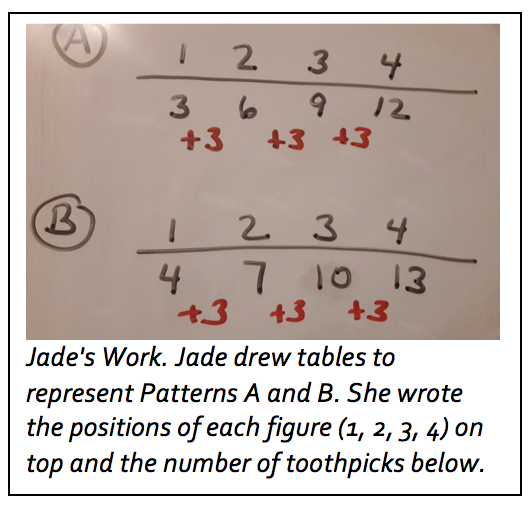One of our main goals throughout all the modules is to help participants understand the importance of assessing children’s thinking. To help you to achieve this goal, we have designed several activities that you can use in a higher education classroom or in a teacher workshop. This activity engages participants in bug detection and analysis; that is, figuring out the thinking that may underlie incorrect answers.
Activity for Teacher Educators
 The examples we use in this activity involve problems that a preschool or kindergarten child would not see—they are more appropriate for the early elementary school grades. We use the problems because they are sufficiently complex to challenge your participants and engage their interest.
The examples we use in this activity involve problems that a preschool or kindergarten child would not see—they are more appropriate for the early elementary school grades. We use the problems because they are sufficiently complex to challenge your participants and engage their interest.
There are many reasons for mistakes. This paper focuses on understanding the thinking underlying children’s mistakes. Rather than make assumptions about the mistake and why the child made the mistake, we want to look for what the child can do and what they understand.
Understanding the thinking that results in mistakes is a central goal of assessment. Just as we need to know how a child got a correct answer, we need to determine why she got a wrong answer. Just as a child may obtain a correct answer without understanding the math, he may get a wrong answer but still understand a good deal.
There are many ways to learn what underlies correct and incorrect answers. The most basic and direct is to ask the child to talk about the method of their solution. “How did you know? What were you thinking?” (The art of questioning is discussed in Math Thinking Conversations.)
In the activity described here participants try to figure out how the child uses systematic but incorrect strategies, sometimes called bugs, to solve problems. Bug is a term used in connection with computer errors. In 1945, when computers were invented, a moth got into the innards of a computer and interfered with its operation. The computer had to be “debugged.” Later the term was used to refer to a programming glitch that systematically produced an unintended result. Imagine that one step in a very long and complex program involved a command to add instead of subtract. This would almost always (except if the number were zero) produce an incorrect but predictable result.
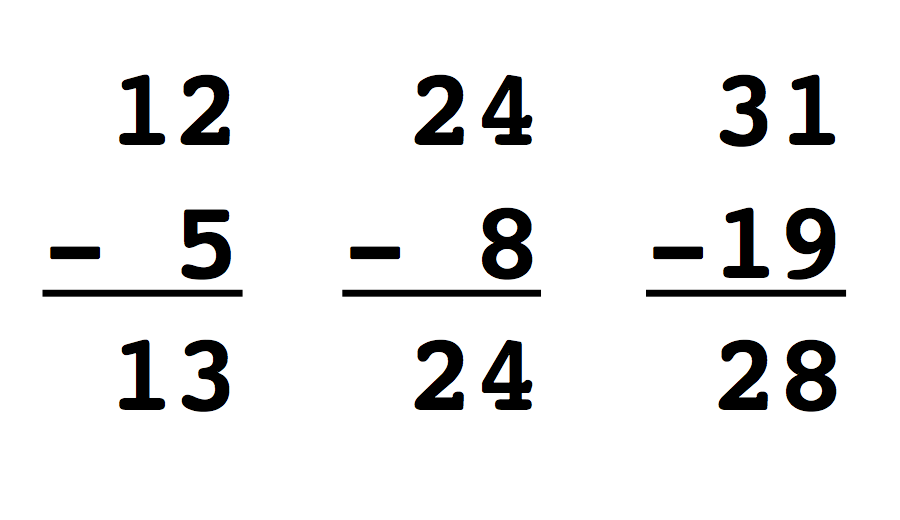 Children often use buggy methods too. Here’s an example that a participant could examine. A child is shown this written subtraction problem 12-5 and produces the answer 13, a number which is bigger than the minuend, 12 (the first number from which a quantity is subtracted). Then the participant sees several similar examples solved by the same child.
Children often use buggy methods too. Here’s an example that a participant could examine. A child is shown this written subtraction problem 12-5 and produces the answer 13, a number which is bigger than the minuend, 12 (the first number from which a quantity is subtracted). Then the participant sees several similar examples solved by the same child.
How did the child get these incorrect answers? In the case of 12 – 5, how is it possible to subtract and get a bigger number than the one you started with? By examining several examples it becomes clear that the child most likely believed that “you have to subtract the smaller number from the larger,” and since five is bigger than two, the child subtracted two from five and brought down the one in the tens place to get the answer 13. It makes perfect sense given his rule! And if you check the answers to the other problems, you can see that they all resulted from this strategy, which is based on an idea that is only partly true. Yes, as children learn, you do have to subtract the smaller from the larger number (we are not dealing with negative numbers here), but in these cases the larger number includes both the tens digit and the units digit. In the original example, the larger number is 12 not five. Children may not understand this because they are operating on a very procedural level, which is unfortunately all too common. If you asked which is the bigger number, 12 or five, they would almost certainly know that it is 12.
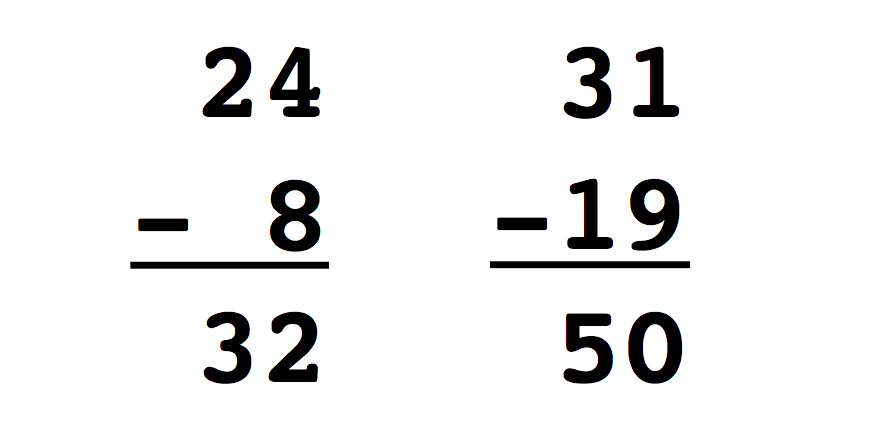 In the next example, a different child gets different wrong answers to the same problems.
In the next example, a different child gets different wrong answers to the same problems.
Can you figure out why? Hint: think about a method that starts with the letter a.
The following activity engages participants in a bug hunt. Here’s how it works.
First, you show participants a series of buggy solutions to arithmetic problems, just like the ones described here. Then show the participants another problem (13-5) without the answer. Next, the participants’ task is  to predict the answer that the child would get on the new problem. If you know the bug used to produce the first several answers, you should be able to use it to get the buggy answer to the last problem, in which taking the larger from the smaller yields the answer 13.
to predict the answer that the child would get on the new problem. If you know the bug used to produce the first several answers, you should be able to use it to get the buggy answer to the last problem, in which taking the larger from the smaller yields the answer 13.
The intended goal of this exercise is this: If participants learn to think in terms of bugs, they may get in the habit of analyzing their children’s wrong answers. For example, if the preschool child says, “Twenty-eight, twenty-nine, twenty-ten, twenty-eleven,” the participant will easily be able to detect the counting bug, which makes sense, because ten usually follows nine. The participant can then seize upon this teachable moment to help the child understand the base-ten system underlying the counting numbers.
The take-home lesson for participants is that wrong answers may result from systematic strategies that are based on meaningful but misapplied ideas. Wrong answers need to be taken seriously because they can serve as valuable windows into the child’s thinking. Although the content differs, this is as true for four-year-olds as it is for older children and adults. Participants should not take preschool children’s incorrect responses at face value. The surface mistake can result from a semi-sensible method.
Here are some problems that you can use in a bug exercise for participants. Each problem gives an example of a buggy solution. The participants need to figure out the bug (so do not show them the bolded name of the bug!). To see if they can, give them similar problems without answers. The participant’s job is to get the answer that using the bug would produce. Here are six bugs with solutions they produce.
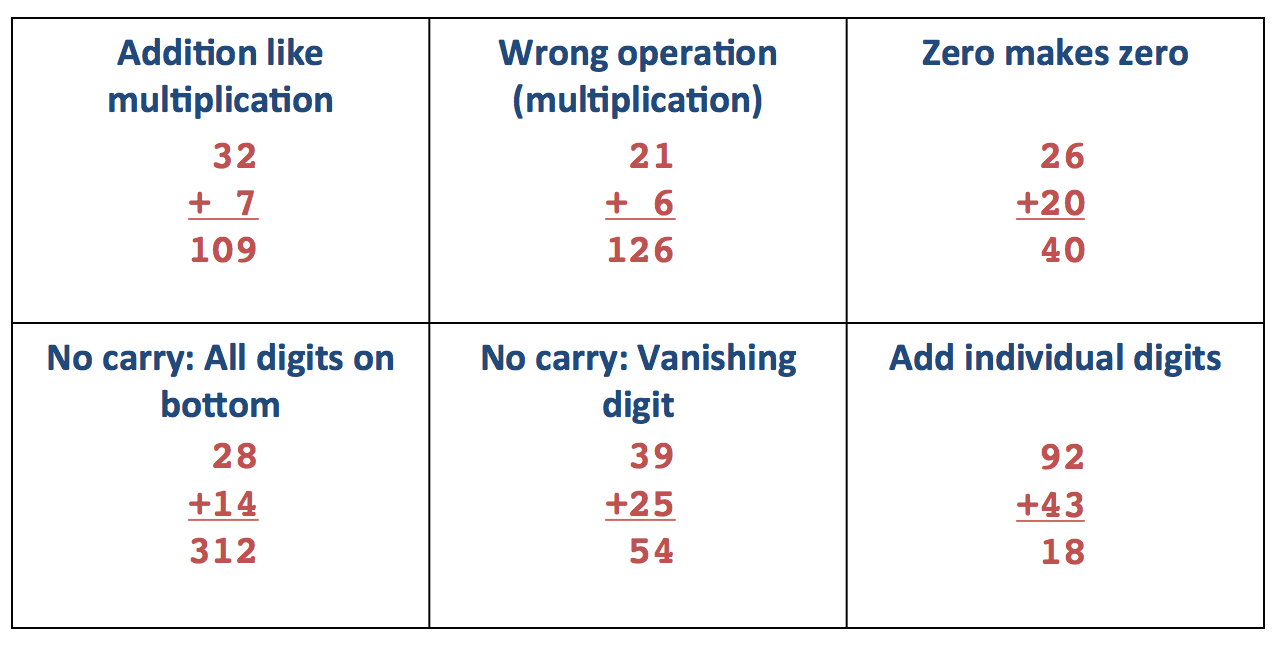
Participants usually enjoy this activity. Happy Bug Day!

